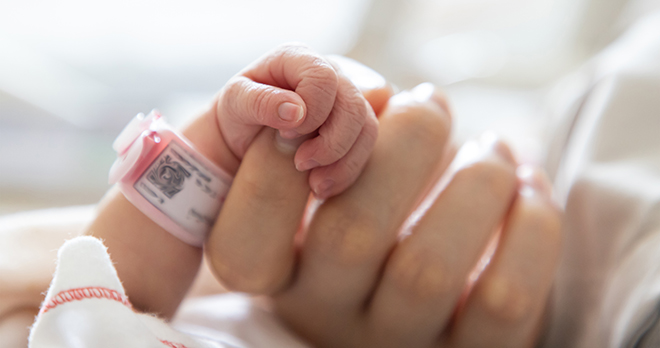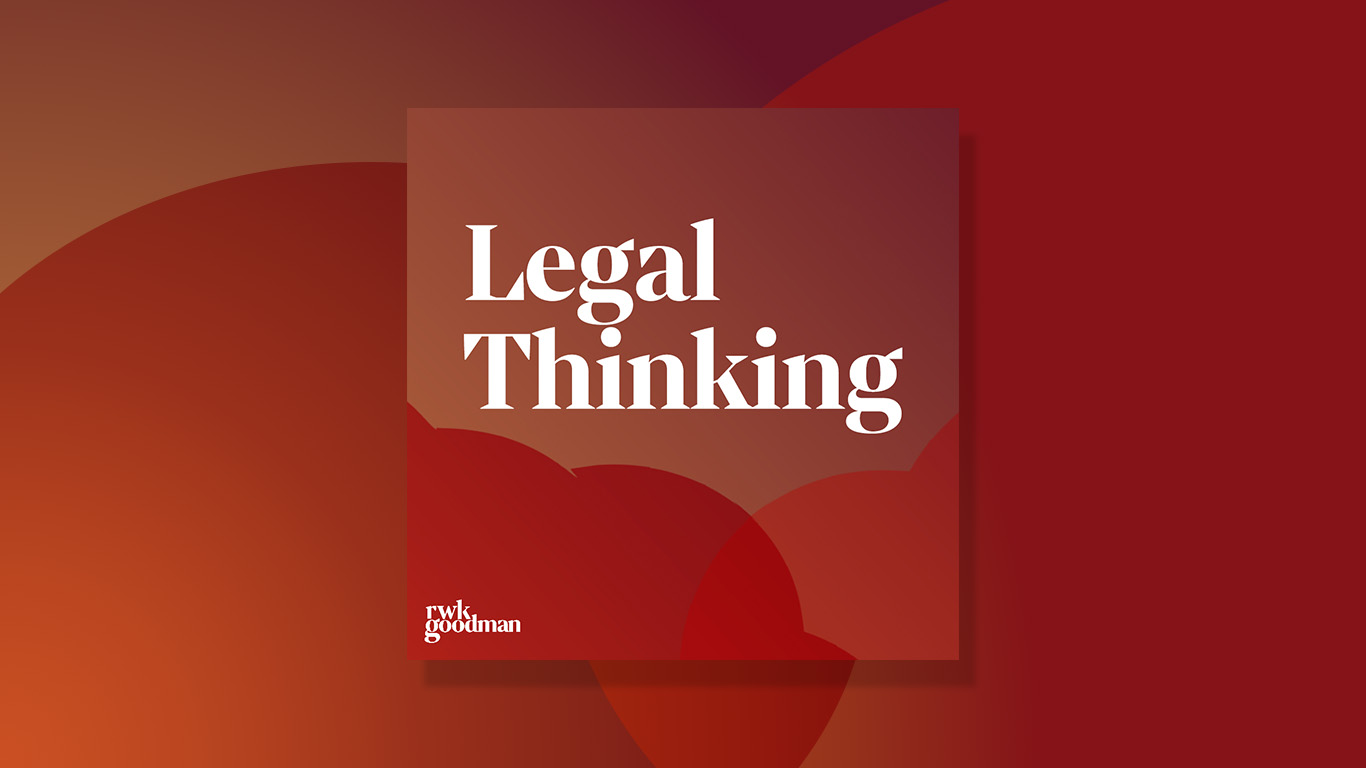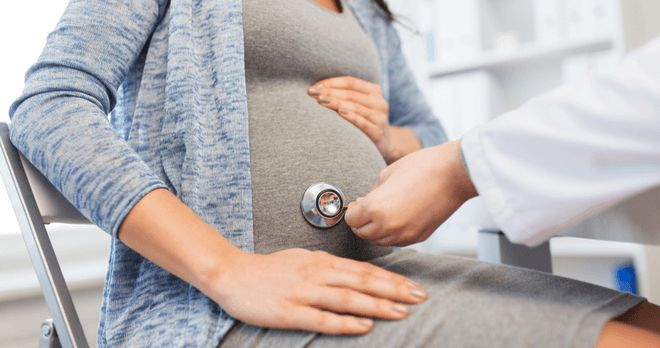What you need to know about heavy bleeding after birth

As a new mum, it is normal to experience some blood loss. However, some mums experience the rare but serious complication of post-partum haemorrhage (PPH).
We’re here to explain when you might need to be on the lookout for signs of heavy bleeding or PPH.
When might heavy bleeding after birth be a post-partum haemorrhage?
The NHS and the Royal College of Obstetricians and Gynaecologists (RCOG) defines a Post-partum haemorrhage (PPH) as excessive bleeding from the vagina at any time after the baby’s birth, up until six weeks afterwards. Blood loss after giving birth is normal but excessive bleeding is measured to be the loss of 500ml (a pint) of blood.
How long after birth can a haemorrhage happen?
Post-partum haemorrhage (PPH) most commonly occurs immediately following birth and within 24 hours (primary PPH). A primary PPH can be minor (lose 500-1000ml) or major (lose more than 1000ml). A secondary PPH occurs after the first 24 hours and up to six weeks after birth.
What is the first line treatment for post-partum haemorrhage?
Given that PPH remains the leading cause of maternal mortality worldwide, quick and careful management is critical. Treatment is dependent on the cause of the PPH, how much blood is lost and whether any clinical signs of shock and other complications are seen.
First line treatment for uterine atony (where the womb doesn’t contract strongly enough after the birth in order to clamp the placental blood vessels shut) involves massage/compression of your womb through your abdomen, and sometimes vaginally, to encourage it to contract.
Treatment may involve medications to stop bleeding. In more serious cases, where the bleeding continues, it may be necessary to go to the operating theatre to find the cause of the haemorrhage and carry out a procedure to control the bleeding. These procedures can range from a ‘balloon’ being inserted into the womb to stop the bleeding by putting pressure on the blood vessels, or very occasionally, a hysterectomy may be required to stop the bleeding.
If a lot of blood is lost, it can make you anaemic and feeling very fatigued. You may require an extended hospital stay and a blood transfusion.
Who is at highest risk for haemorrhage after birth?
Whilst the Royal College of Obstetricians and Gynaecologists (RCOG) have identified risk factors for a PPH, they make clear that most women with these risk factors will not experience a haemorrhage.
Risk factors for a PPH during labour include delivery by caesarean section, induction of labour, a perineal tear or episiotomy, delay in delivery of the placenta, having an infection during labour and having a large baby.
Some people have risks factors for a PPH that are identifiable during labour, including having had a PPH in a previous pregnancy, having a BMI of more than 35 or having placental complications such as placenta praevia or suspected placental abruption. Your healthcare team will be able to recognise these risks and counsel you on how to reduce risk of a PPH. You will likely receive a recommendation to give birth in a consultant-led maternity unit.
In terms of what causes PPH, the most common cause is defined as uterine atony, where the womb doesn’t contract strongly enough after the birth in order to clamp the placental blood vessels shut. Other causes of PPH are when part of the placenta has been left in the womb, or as a result of trauma from a caesarean section or episiotomy/perineal tear.
How long does it take to recover from post-partum haemorrhage?
This depends on the extent of the blood loss, the cause of the haemorrhage and the extent of the treatment needed. It’s likely that a longer hospital stay is needed. Usually, most people who have suffered a PPH will make a full recovery in a few weeks. Your GP may offer to check your iron levels through a blood test, to check that you are not anaemic.
However, if you have suffered a more serious a severe PPH the effects can last much longer. In extreme cases, a hysterectomy may have been required as a radical treatment to stop the PPH. This is significant surgery and can lead to a medically induced early menopause and removes the opportunity to have more children. The research of long terms effects of PPH are generally under researched and not known.
Is it safe to have another baby after post-partum haemorrhage?
If you have suffered from a PPH, there will be an increased risk of PPH in future births and you will likely be under the care of a consultant-led maternity unit. You will receive support and advice about how to limit the risk of a PPH.
Is post-partum haemorrhage considered trauma?
If you have suffered a PPH, you may have sustained a traumatic birth. In some circumstances this can lead to anxiety, depression or even PTSD. After a PPH, you should be offered a de-briefing meeting at hospital with a consultant to discuss what happened.
Can you sue for post-partum haemorrhage?
Yes, there can be circumstances where the risks for PPH in pregnancy and/or labour were not appropriately identified and managed and ultimately the PPH was preventable. A birth injury solicitor will also investigate the management of the PPH to ensure that it was treatment was carried out appropriately and in a timely manner.
As birth injury solicitors ourselves, we help clients who have suffered PPH. Here is how we helped a client who suffered a secondary PPH after leaving hospital from a retained placenta:
Example one
Our client had her first baby by emergency caesarean section and three days later she returned home. Nine days after giving birth she suffered a secondary PPH. She returned to hospital and underwent an examination under anaesthetic where a small piece of placenta (retained product of conception) was removed. She returned home two days later. However, 24 days after giving birth she suffered a second post-partum haemorrhage where a hysterectomy was carried out to stop the bleeding. The failures in her care concerned not identifying and removing the whole placenta at the earlier examination. It was also admitted by the hospital that a hysterectomy was very radical and other methods of stopping the bleeding were not tried. It was accepted that had other methods been tried, a hysterectomy would have been avoided. Our client suffered from birth trauma and unable to enjoy the first precious months of her baby’s life. Having undergone a hysterectomy at an early age, it resulted in early onset menopause for which she needed to take hormone replacement therapy. The negligence also tragically prevented her from having any more children. We supported our client and achieved a sum of compensation for her (£70,000 rpi).
Here is an example of how we helped a client that suffered a primary PPH as a result of a negligently managed labour and delivery:
Example two
Our client was pregnant with her first child and had no complications during her pregnancy. Her labour progressed slowly and she was sent home at four centimetres dilated. She returned to hospital and at the final stages of labour, forceps were used to attempt to deliver the baby. Following the use of forceps , it was noted that the baby’s heart rate had slowed. The decision was then made to undertake an emergency caesarean section.
Following delivery, our client suffered a postpartum haemorrhage and needed several blood transfusions. The bleeding continued and she had a number of other procedures to attempt to stop the bleeding. These attempts were unsuccessful and our client underwent a full hysterectomy followed by an admission in the intensive care unit.
A claim was brought on the basis that she was negligently discharged her home when she was in established labour which caused the labour to be prolonged and increased the risk of post-partum haemorrhage. Furthermore, the forceps were not used properly and that they should have been used at an earlier point in the labour. We also investigation the procedures undertaken to stop the haemorrhage and found these to have been negligently carried out. Without these failings the haemorrhage and hysterectomy could have been avoided. We supported our client and achieved a sum of compensation for her (£150,000 rpi).
These are just two examples of the many maternal injury claims we work on. If you want to find out more about our expertise in this area, make sure to visit our maternal injury claims page.
Post-partum haemorrhage is a traumatic event. And when you know it could have been prevented, it’s worse. If you’ve suffered PPH as a result of negligence, we’re here to help.
Call now



